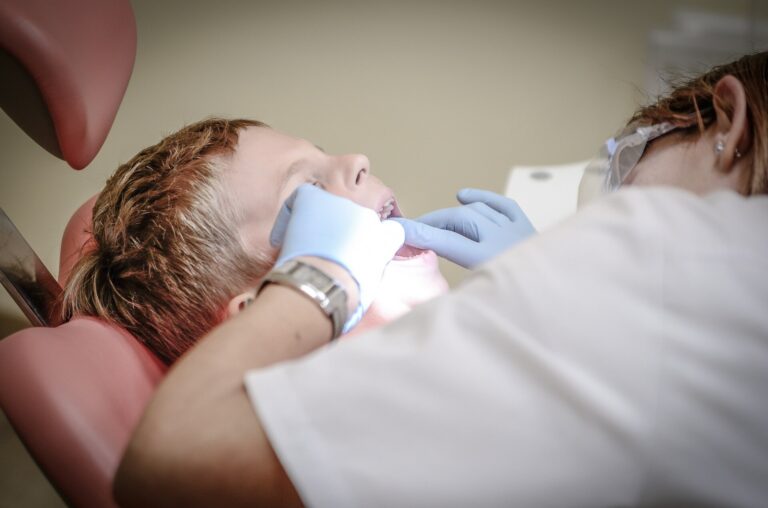Credit: CC0 Public Domain
Researchers at Queen Mary University of London found that children living in areas with high levels of deprivation are three times more likely to develop severe tooth decay requiring tooth extraction in hospital, compared to children living in more affluent areas. The findings highlight the urgent need for equitable access to preventive dentistry.
In the study, published in BMJ Public Health, researchers analyzed de-identified doctor and hospital records for 600,000 children aged between five and 16 living in North East London. During the five-year study period, one in 200 children had at least one tooth extracted under general anesthesia, which must be done in a hospital setting. Most of these children had multiple teeth extracted.
The study findings demonstrate significant socio-economic and ethnic disparities in severe tooth decay in children, which can be prevented through access to NHS dentists and policies such as brushing teeth in schools and controlling sugar in food and drink.
- Children who lived in areas with the highest percentage of low-income households were three times more likely to need tooth extractions, compared to those who lived in areas with the lowest percentage of low-income households.
- Children from certain ethnic groups were more likely to need a tooth extraction, compared to children from white British ethnicities:
- White Irish: twice as likely.
- Bangladesh: 1.5 times more likely.
- Pakistani: 1.4 times more likely.
- Children living with obesity were less likely to need a tooth extraction than children of a healthy weight. More research is needed to replicate and understand this finding.
The researchers also looked at data from a North East London borough, comparing rates of child tooth extractions with access to NHS general dentists. After adjusting for deprivation and ethnic group, the highest risk of hospital extraction was for children in Tower Hamlets, which also has the lowest GP attendance in North East London.
In contrast, children living in Redbridge, Havering and Barking & Dagenham had the lowest risk of tooth extraction in hospital – these areas have the highest proportion of five-year-olds accessing GP services. Furthermore, the 2022 National Dental Epidemiology Program (NDEP) oral health survey found that only 13% of decayed teeth in five-year-olds in London had been filled.
This study is the first to analyze inequalities in tooth extractions of children under general anesthesia by ethnic group in such fine detail, revealing a difference in outcomes between white Irish and white British groups and between Bangladeshi, Pakistani and of India. By linking hospital data to GP records, which include 16 categories for ethnic groups, the researchers were able to reveal ethnic disparities that are less apparent when using the broader categories of ethnicity used in previous research.
Vanessa Muirhead, Co-author and Reader and Honorary Consultant in Dental Public Health at Queen Mary, said: “Unfortunately, our findings demonstrate large socio-economic and ethnic disparities associated with access to dental care and outcomes.
“Teeth extraction is a last resort, but when families have difficulty accessing timely prevention and treatment services, dental problems can progress until children need more serious and expensive interventions, such as multiple tooth extractions under general anesthesia.”
Nicola Firman, lead author and Health Data Scientist at Queen Mary, said: “Linking health data from different settings has allowed us to see more clearly the inequalities in the dental care system.
“Our findings indicate an urgent need for equitable access to preventive general dental services and interventions that target the broader determinants of dental health.”
Christopher Tredwin, Dean and Director of the Institute of Dentistry at Queen Mar, said: “This research highlights clear oral health inequalities, which we also know very well through our long service to the local community.
“In partnership with Barts Health NHS Trust, Queen Mary Dental Institute opened a new dental clinic in Kenworthy Road, Homerton, earlier this year.
“It now provides faster and easier access to dental care in the region, while our dental and medical students learn to treat children in these primary care settings. Through our students’ outstanding work in these clinics, we hope to mitigate the effects of unequal access in general dentistry in North East London and helping to provide care to those who need it most.’
Victoria King, Director of Funding and Impact at Barts Charity, said: “This important work, supported by Barts Charity, has shown that there are large inequalities associated with severe tooth decay for children in East London, which could to prevent. Understanding these health inequalities is key to enabling better healthcare for our diverse population in East London.”
More information:
Disparities in child caries requiring dental extraction under general anesthesia: a longitudinal study using linked electronic health records. BMJ Public Health (2024). DOI: 10.1136/bmjph-2023-000622
Reference: Children living in deprived areas three times more likely to need dental extractions in hospital, study finds (2024, July 15) Retrieved July 19, 2024 from
This document is subject to copyright. Except for any fair dealing for purposes of private study or research, no part may be reproduced without written permission. Content is provided for informational purposes only.


